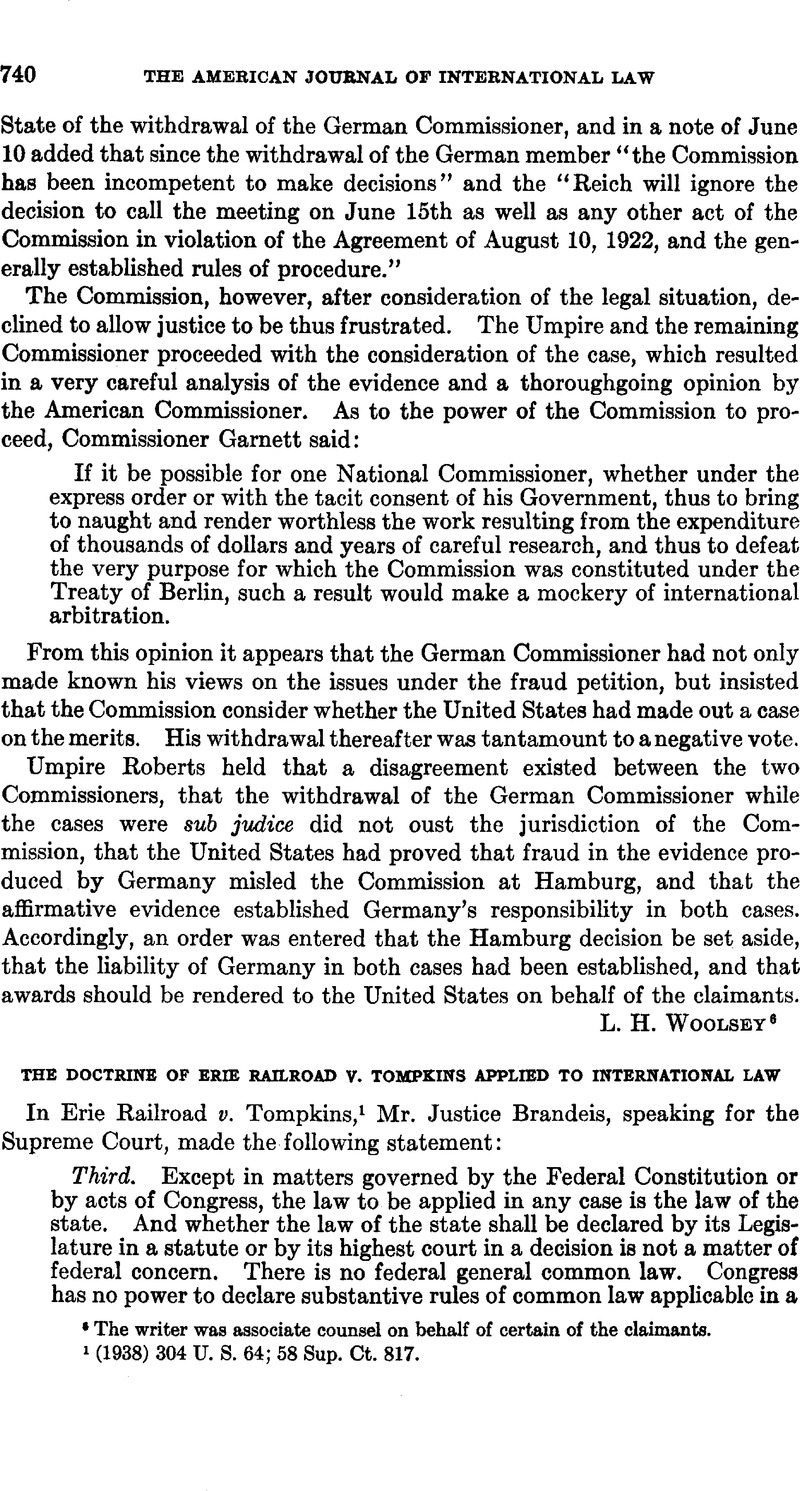Article contents
The Doctrine of Erie Railroad v. Tompkins Applied to International Law
Published online by Cambridge University Press: 12 April 2017
Abstract

- Type
- Editorial comment
- Information
- Copyright
- Copyright © by the American Society of International Law 1939
References
1 (1938) 304 U. S. 64; 58 Sup. Ct. 817.
2 (1842) 16 Pet. 1.
3 See 52 Harvard Law Review (1939), 1002, for a consideration of the applicability of the Tompkins case to conflict of laws. There is not space in the present comment to consider the inapplicability of the Tompkins case to the admiralty field, but surely it would not be applied there.
4 (1900) 175 U. S. 677, 700.
5 (1894) 159 U. S. 113, 163.
6 The Nereide (1815), 9 Cr. 388, 423.
7 Kansas v. Colorado (1907), 206 U. S. 46, 97.
8 See Wright, Enforcement of International Law through National Law in the United States (1915).
9 Quoted in I Moore, Digest of International Law, p. 10.
10 Scott v. Sandford (1856), 19 How. 393, 556.
11 Mr. Justice Gray in the Paquete Habana, supra.
12 Respublica v. Longchamps (1784), 1 Dallas (Pa.), 111.
13 Riddell v. Fuhrman (1919), 233 Mass. 69.
14 Louisiana General Statutes, 1938, No. 55, Secs. 1–4; cf. 39 Columbia Law Review (1939), 317.
15 Cf. Sprout, , “Theories as to the Applicability of International Law in the Federal Courts of the United States,” this Journal, Vol. 26 (1932), p. 280 Google Scholar. Attention should also be called to the fact that Congress has a constitutional power “to define and punish … offenses against the law of nations.” Art. I, Sec. 8.
- 2
- Cited by


